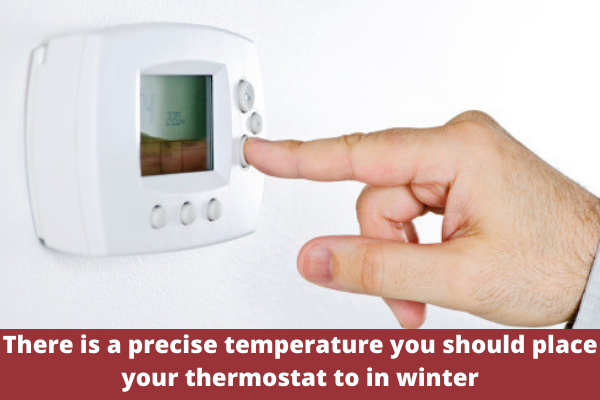Several homeowners and renters are looking for methods to cut their energy use and save money on their heating costs this winter since heating bills are anticipated to rise by as much as 54 percent for certain homes this winter.
Fortunately, there are numerous simple strategies to reduce your energy use, one of which is to adjust your thermostat to the proper temperature.
As we proceed through this post, we’ll explain how to adjust your programmable thermostat for maximum efficiency this winter and how it may make a difference in your household. We’ll also give you some pointers on keeping your home warm without breaking the budget in the process.
The correct temperature for winter
According to the United States Department of Energy, it’s ideal to have your thermostat set at 68 degrees Fahrenheit for most of the day throughout the winter season.
Additionally, you should set aside 8 hours every day, during which you will lower the temperature by between 7 and 10 degrees to get the greatest amount of effectiveness. It is possible that by following this pattern, you may be able to lower your yearly energy bills by as much as 10%.
By your schedule and personal comfort preferences, you may choose whether you’d want to keep your house colder during the day or cooler at night. Some individuals like to turn the thermostat down at night to snuggle up under blankets and take notice of the chilly weather.
Furthermore, sleeping in colder temperatures may be associated with more peaceful sleep.
Others may find it more convenient to lower the thermostat throughout the afternoon when they are at work, as well. Once they get to their destination, they raise the thermostat to a more comfortable setting.
Why does it matter?
What is it about 68°F that makes it the perfect temperature for winter? For some people, it’s on the chilly side of what they consider to be acceptable interior temperatures, but there’s a valid reason to keep your home cooler throughout the winter.
It will take longer for your house to lose heat when the thermostat is set at a lower setting instead of when the temperature is raised.
To put it another way, keeping your home at a colder internal temperature can help it retain heat for a longer period and minimize the amount of energy necessary to keep the house comfortably warm. As a result, you will save both energy and money.
Placing your thermostat for the highest efficiency
In addition to adhering to these temperature guidelines, you may improve your energy efficiency by positioning your thermostat in the most efficient location possible.
If possible, keep your thermostat away from draughty areas (such as near vents or doors) and from regions that receive direct sunlight, as these variables may cause your thermostat to activate needlessly if it is in one of these locations. As an alternative, hang it on an interior wall in a frequently visited location of your home.
Have a heat pump? Keep this in mind.
It’s not a good idea to fiddle with your thermostat numerous times each day. Therefore a clever thermostat or programmed thermostat that allows you to create a timetable and automated temperature adjustments is recommended.
Unfortunately, certain smart and programmable thermostats do not function well with heat pumps. If you have a heat pump system, consult with your HVAC professional about purchasing a unique type of thermostat built specifically for use with your system.
Other methods to lower energy expenses.
A green energy source such as solar energy may interest you if your electricity costs are becoming too expensive.
With solar panels, you may create your electricity, lowering your energy expenditures and decreasing your dependency on the public power system.
Must read: Amazon employee died on the job after being rejected sick leave, state, co-workers
The use of solar panels is an environmentally responsible substitute for traditional energy sources, supplying clean electricity all year (including in the winter) for your house, company, or car.
Conclusion
It can significantly impact your wintertime energy use by making intelligent thermostat adjustments. It is possible to save energy and money by keeping your home’s temperature at or below 68 degrees Fahrenheit (or below).
What are your plans for the rest of the year? In the summer, the polar opposite is true. During the hotter months of the year, the Department of Energy suggests setting your thermostat as large as possible and then lowering it to 78°F to cool off when the temperature drops.
Please stay connected with us for more info and news!

